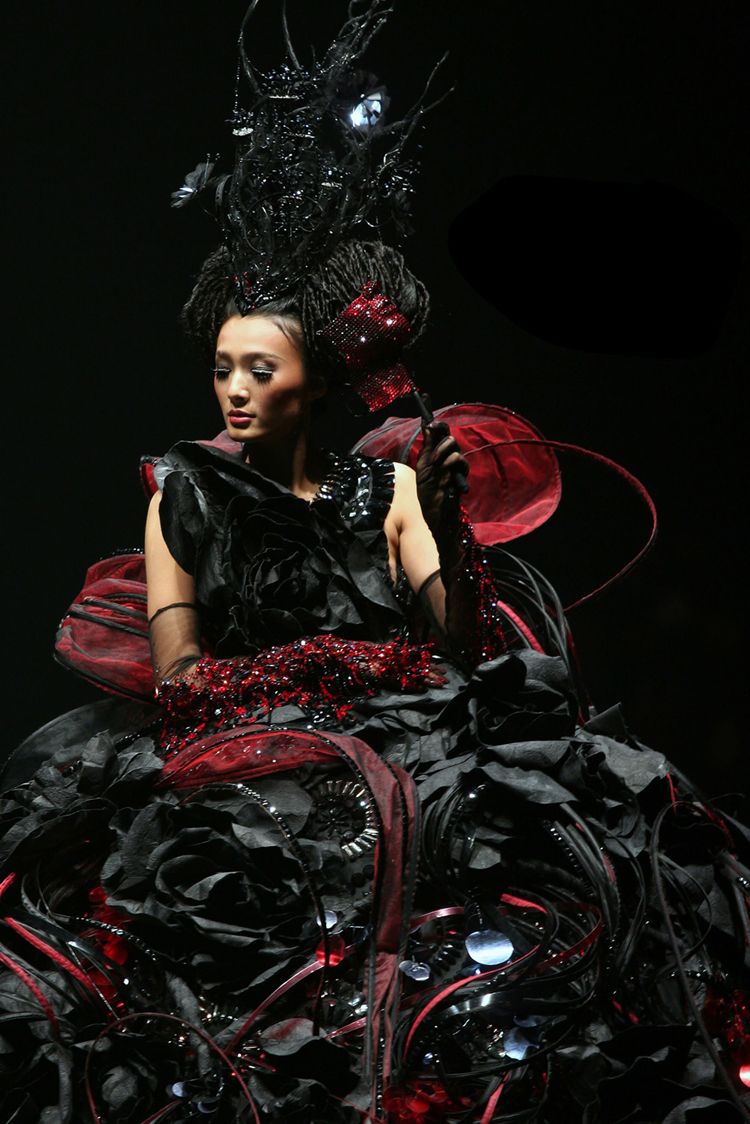
Happy Chinese New Year! To celebrate the Year of the Horse we’ve pulled together a list of our favorite Chinese designers—from ready-to-wear to haute couture—for styles you’ll want to fill your closet, no matter the year. Traditional detailing, modern silhouettes and avant-garde blends give the palettes of these designers something unique, different from the Parisian and Italian houses we know so well. Keep an eye on these names over the coming year as we’re sure you’ll find a few surprises and new favorites.

A graduate of the Royal College of Art, designer Xiao Li’s designs are built on structure and color. Billowing skirts and dress, partnered with oversized tops are cornerstones in her collections, allowing her to create pieces that are both wearable and innovative. "Traditional knitwear is more soft and shapeless," Li told Dezeen. "I wanted to find out a new way to present knitwear and was influenced by Modern architecture and '60s Balenciaga." Using molded knitwear and silicone, Li creates modern on-trend shapes that are on another level of style.

La Vie designer Ji Cheng is already known as one of the leading names in Chinese fashion and founded her label over 10 years ago in 2002. Cheng studied in Italy at the Instituto Marangoni in Milan before working at Missoni Sport, and then finally starting her own brand. Cheng has been invited to show in fashion weeks all over the globe including Singapore, Taiwan and London. Her designs blend the historical aesthetic of China with modern, sleek silhouettes in a line that epitomizes East meets West.

Born and raised in China, Wang left her homeland at the age of 16 to study at the London College of Fashion and Central Saint Martins College of Art and Design. Interning for eclectic brands like Vivienne Westwood and Alexander McQueen, the young designer gained experience that heavily influences her designs today. Ladylike silhouettes with exaggerated lines or unexpected twists litter the collection, making it a modern and youthful take on more traditional styles.

Founded in 1992 by Tiger Zhang, the brand’s philosophy is to “Intergate antiquity to the present, converge Chinese and Western.” Following this outline, the brand has flourished over the last 20 years using modern cuts and traditional prints to bring the past and present together in a merging of designs. NE♦TIGER is also one of the leading brands in fur in China, as well as popularizing both Chinese and European wedding dresses.

Studying at the Chinese Textile University and Central Saint Martins, Wang designed for several different Chinese labels over the course of 10 years following graduation until she started her own brand in 2005. Known for her darker, avant-garde aesthetic that channels designers like Comme des Garçons and Ann Demeulemeester, Wang’s styles speak to a younger generation. Having perviously shown in Milan Fashion Week, the brand has been gaining in popularity and expanding their availability worldwide.

After going to college to study interior and space design, Qui Hao started his first label of ready-to-wear called Neither Nor, which sold in department stores around China. Only after this initial success did he begin to professionally study women’s fashion, attending Central Saint Martins then returning to China to start his eponymous label. Nominated for several design awards, Hao’s collection is sleek and modern, mirroring current labels seen on major runways.

If you’ve seen any avant-garde haute couture designs from China, chances are they belonged to Guo Pei. Pei graduated from the Beijing School of Industrial Fashion Design in 1986 and started as a tailor by making dresses to order. “I had very few clients at the beginning, but the price I set helped. I knew if it was expensive, it meant getting one dress commission was enough to give me the space to work,” she told the Wall Street Journal. Today she has won multiple awards for her couture designs and was the official designer for the ceremonial dress at the 2008 Beijing Olympics.









